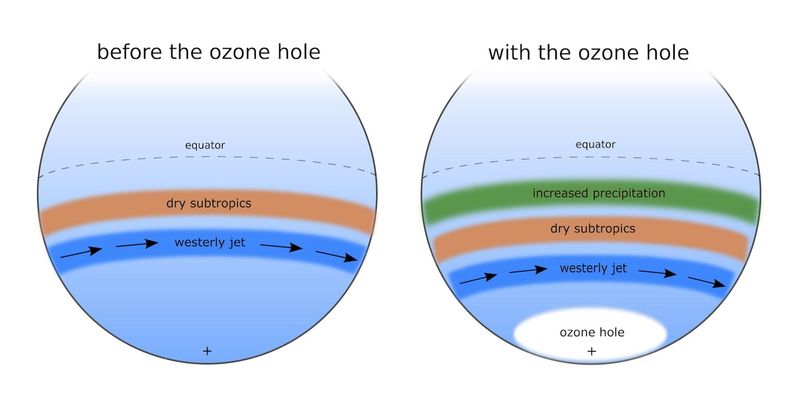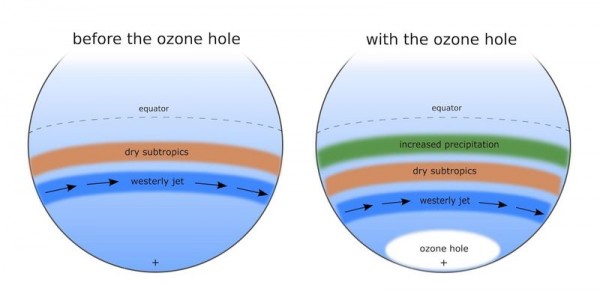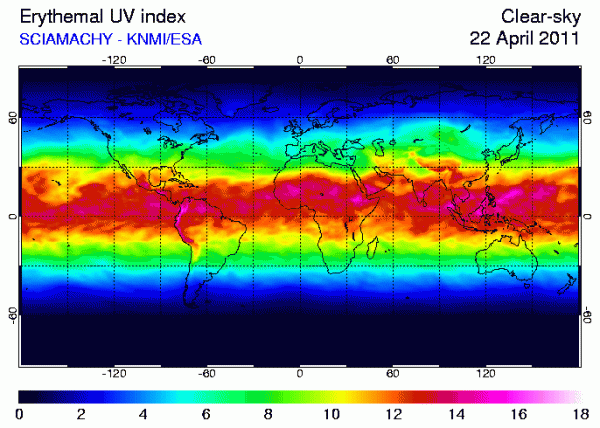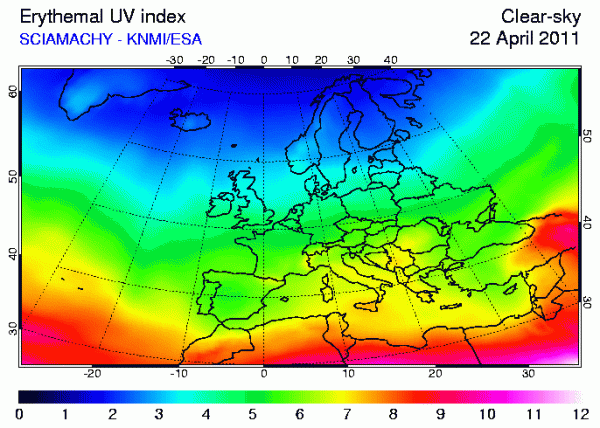Impact of polar ozone depletion on subtropical precipitation

The ozone hole over Antarctica has been rearranging rainfall patterns throughout the Southern Hemisphere for decades, a new modeling analysis shows.
The idea that losing ozone in the cold stratosphere over the South Pole could affect weather in the lower atmosphere all the way to the warm equator means Earth's changing climate system is even more complicated than most everyone thought.
The modeling study, published in the recent online issue of the journal Science, revealed that thinning of the ozone layer prompts severe cooling in the lower stratosphere over Antarctica. This cooling causes the lower level troposphere to rise and leads to a poleward shift in a strand of strong winds known as the westerly jet. Moving this jet stream pulls the storm track and other atmospheric circulation features farther south.
In the latter half of the 20th Century, observations tracked the southerly migration of the band of sinking air over the dry Subtropics and the rising air over the Tropics. The changing atmospheric patterns brought more rainfall, especially in summer, to subtropical regions that were previously dry, including eastern Australia.
Record Low Ozone in the Arctic
Using two independent global climate models, the team of U.S. and Canadian researchers successfully replicated these precipitation changes in simulations that isolate the ozone depletion from all other climate conditions, including La Nina as well as heightened greenhouse gas concentrations.
 Especially over the southwestern Indian Ocean, eastern Australia, and the southern flank of the Southern Pacific Convergence Zone the models show that the precipitation response to the ozone hole is unaffected by atmosphere-ocean interactions…and originates almost entirely from ozone depletion in the Southern polar regions.
Especially over the southwestern Indian Ocean, eastern Australia, and the southern flank of the Southern Pacific Convergence Zone the models show that the precipitation response to the ozone hole is unaffected by atmosphere-ocean interactions…and originates almost entirely from ozone depletion in the Southern polar regions.
"In both climate models and observations, the subtropical moistening is linked to a poleward shift of the extratropical westerly jet," concludes lead author Sarah Kang, a postdoctoral researcher at Columbia Engineering's Department of Applied Physics and Applied Mathematics.
Most specialists have been thinking of the depleted ozone layer as a passive component of the system, responsible for filtering out ultraviolet solar radiation which is harmful to humans and other creatures. In calculating the global effects of greenhouse gases on changes in climate, ozone hasn't really been part of the equation.
Discovery of the ozone hole in the 1980s led to widespread concern over the harmful human health impacts of increasing ultraviolet solar radiation. Since 1989, the international treaty known as the Montreal Protocol has banned aerosols containing ozone-eating chlorofluorocarbons (CFCs) and the ozone hole is slowly on the mend.
"While the ozone hole has been considered as a solved problem, we're now finding it has caused a great deal of the climate change that's been observed," said co-author Lorenzo Polvani of Columbia University's Lamont-Doherty Earth Observatory. So in the coming decades, the closing of the ozone hole over Antarctica – while saving humans and other creatures from the harmful cancer-causing UV rays – will come with its own set of climate changes. (DiscoveryNews)
Record stratospheric ozone loss in the arctic in spring of 2011
Global Atmosphere Watch
Ozone Mapping Centre
TEMIS – Near-real time global ozone field
TEMIS UV Radiation Index
NOAA ESRL Global Monitoring Division



Commenting rules and guidelines
We value the thoughts and opinions of our readers and welcome healthy discussions on our website. In order to maintain a respectful and positive community, we ask that all commenters follow these rules.